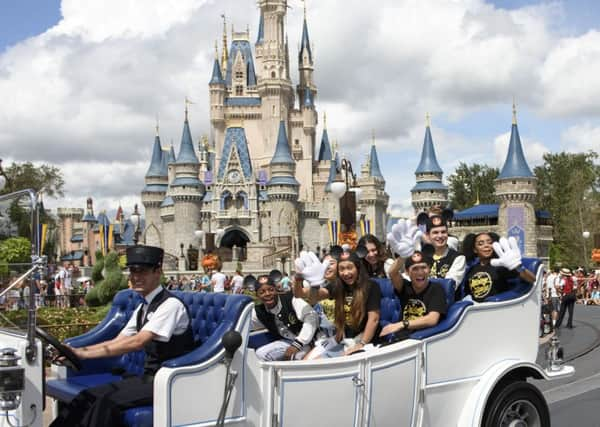Jane Bradley: The struggle to build futuristic cities that people like


I have a number of friends who have recently moved to large new-build estates in towns close to Edinburgh in a bid to assuage the demand for housing outside of Scotland’s main cities.
Although the comfortable housing on the outskirts of places such as Ratho and North Berwick is arguably less characterful than the draughty Victorian flats my mates previously inhabited in the city centre, they argue that the community is actually stronger. “It is like being back in first year at university,” one of them tells me. “Everyone is new as they have just moved in – most of them from the city – and they all want to make friends.”
Advertisement
Hide AdAdvertisement
Hide AdAlthough these estates have attached themselves to existing towns or villages, the idea of creating entirely new communities, even cities, from scratch is growing across the world. Last week, the Philippines government announced plans to create a “twin city” to its capital Manila, to help relieve congestion in a place said to have one of the worst pollution problems in the world.
New Clark, which will be constructed over the next 30 years, will be a city of the future, including drones, driverless cars, technologies that will reduce buildings’ water and energy usage, and a giant sports complex. Two thirds of the footprint of the city is to be dedicated to green space in a bid to reduce carbon emissions, while all parking will be underground. It sounds like something out of a sci-fi film and a way of living which residents of ancient cities such as Edinburgh would find it hard to envisage.
It is not a new idea. Bizarrely, Walt Disney had a similar plan in the early 20th century. Worried about the future of the world his children and grandchildren would inhabit, he unveiled a blueprint for a “experimental prototype community of tomorrow”: a city of 20,000 residents with a central business district and futuristic public transport.
But it was not to be. After his death in 1966, the idea was abandoned and the site subsequently turned into part of Disney World. The company has since created a utopian small town, somewhat cheesily called Celebration, in Florida, which boasts, among other things, the “Great American Pie Festival” and Independence day fireworks in the mode of Gilmore Girls’s Stars Hollow – as well as, reportedly, leaky roofs and mouldy walls. Another utopian community, Golden Oak, actually built on the Walt Disney park, has attracted so-called “Disney-philes”, both as holiday home owners and permanent residents.
However, old Mr Disney’s idea of a full-scale city of the future is living on today. It has to – thousands of new cities are needed to house the increasing global population – which is projected by the United Nations to reach 9.8 billion in 2050. Hundreds of entirely new cities have been sprouting up across Asia and Africa since the early 2000s.
In Malaysia, a controversial “eco city” is under construction, which, its makers claim, will be so smart that “they’ll keep your orchid perfectly watered without human intervention, that a window broken by local children kicking around a football will be fixed before you return home”. Houses will be covered in plants, while 700,000 people are eventually expected to live there.
In Lagos, Nigeria, Eko-Atlantic is under construction on land reclaimed from the sea. It is touted to bring 250,000 new jobs and transform living for the 70 per cent of Lagos’s 22 million residents who live in poverty.
Meanwhile, in China, a replica of the Unesco-protected city of Hallstatt in Austria, has recreated everything – from the parish church to the town fountain of the 16th century town near Luoyang – on the Dong river. It is dubbed a “clone village”.
Advertisement
Hide AdAdvertisement
Hide AdYet what many of these cities are lacking so far is people. Some are still under construction, others, like Hallstatt China, are struggling to attract people to relocate into the unknown. While we in Scotland are not at the forefront of the smart city revolution, we have already had our own versions. New towns, such as Livingston and Cumbernauld, were built in the 1960s and 1970s as an answer to the slum problems in our biggest cities. In an interview in 2012, to mark the 50th anniversary of the foundation of Livingston, teacher Peter Johnston remembered the fast pace at which the town sprang up. “It was like a frontier town,” he said. And for many, it was. For people crammed into tiny, dark tenement flats in Glasgow, the three bedroom homes with garden which Livingston offered seemed like a dream and something so far removed from what they had previously had.
The new towns, while still not the most aesthetically pleasing of Scotland’s connurbations, worked. They had family homes and gardens, creating a sense of community among residents who enjoyed the space after decades of cramped living. Smart cities, however, run on a concept which entirely belies the concept of community. Instead, they embody a way of life which is based around residential skyscrapers, where people live independently in tiny boxes, travel quickly and efficiently to their jobs in technology companies and return home.
What the creators of these new cities are forgetting is that people need community. Humans like interacting with other humans – most of them, anyway. In the blurb for the real estate in these new connurbations, there is a lot of talk of luxury apartments, smart living and Silicon-valley style enterprise.
Yet, we are not robots. And if the smart city creators want their cities of the future to work, they need to remember that.
